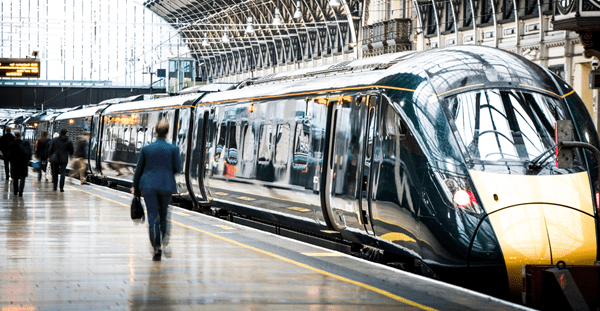For 40 years, uncertainty has shrouded the viability of high speed rail in Australia – ‘the topography isn't right’, ‘air travel will always win out over rail’, ‘the numbers don't stack up’. However, with so few examples to look to from other parts of the world, the rhetoric has typically relied on theory rather than facts. Today, critics still question its feasibility, the potential economic benefits, and even its relevance in a country already grappling with many infrastructure challenges.
What’s little understood about high speed rail is that it has the potential to cross city limits and generate economic uplift in a way that no other infrastructure project can. Take the UK's High Speed 2 (HS2) between London and the West Midlands. The final line, approved in 2017, is currently under construction and will eventually link the UK's two biggest cities and population centres within 45 minutes by rail. HS2 aims to create a corridor of economic and social opportunity for the regions to trade, grow and thrive - and with the line likely to open between 5-10 years from now, it is already proving to be a powerful catalyst for growth, sustainability and housing.
Since construction commenced, HS2 has seen a surge in regeneration and investment around Birmingham and Solihull stations. HSBC, Goldman Sachs and PwC are often pointed to as success stories of the revitalisation of the West Midlands, with each investing in significant commercial real estate in Birmingham. The promise of intercity connectivity and a firm commitment to deliver provides the confidence private companies need to look beyond the capital city CBDs.
A recent report carried out by Arcadis and published by HS2 Limited - From trains to cranes: HS2 and the West Midlands’ development boom – suggests that HS2 will deliver an economic uplift of £10 billion (equivalent to approximately A$20 billion) over the next 10 years, showcasing the substantial long-term economic benefits that high speed rail projects can bring. Beyond the initial construction phase, HS2 has laid the foundation for continued economic prosperity, with ongoing investment and development projects driving sustained growth across the region.
Now, change the names of the cities above. Instead of London, think of Sydney. In place of Birmingham, consider Newcastle. Why couldn't we achieve similar results with our plans for a high speed rail project between New South Wales’s two largest cities? Why shouldn't we give Newcastle the boost that could transform its economic potential and profile? Of course, doubters need more proof – and the proof is in the numbers.
Housing solutions unleashed
As more people are drawn to the areas surrounding HS2's stations in the West Midlands, housing demand will surge, with planned residential homes in HS2's three impact zones increasing by a staggering 484%, a 200% uplift in planned floor space, and a 240% increase in the construction value of new projects. In fact, over the next decade, it is estimated that an additional 41,000 new homes will have been delivered across the HS2 impact zones, which are homes for people attracted by new and varied employment opportunities and services.
This surge in housing development reflects a broader phenomenon observed in regions with efficient transportation networks, where accessibility to urban centres becomes increasingly desirable. It's a phenomenon we take advantage of in Australia. Most of our capital cities either have or are in the process of building metro lines, with the associated investment in urban density and mixed-use developments to bring more people closer to our CBDs.
However, with Australia's population projected to grow to between 34.3 and 45.9 million people by 2071 and a net housing supply shortfall in New South Wales of 252,800 dwellings predicted by 2028, we must think beyond the confines of the city limits. Simply encouraging people to move to the regions also isn't the answer. Depending on your transport options, it can take up to three hours for an individual to commute one way between Newcastle and Sydney for work. That is untenable, unsustainable, and a barrier preventing people and organisations from genuinely considering Newcastle as an advantageous alternative to Sydney. Imagine if that commute took 45 minutes. How much more viable would Newcastle become as a place for businesses to invest in?
The parallels between the West Midlands' experience and Australia's impending housing challenges are striking. High speed rail presents a viable solution to the very real challenge of finding affordable homes close to communities and employment for a growing population. Decentralising population centres will alleviate pressure on urban housing markets and foster sustainable development in regional areas. However, it must be decentralisation with connectivity. We are seeing this play out in the UK. By leveraging the success of HS2 as a model for effective infrastructure investment, Australia has the opportunity to not only meet its growing housing needs but also create the conditions for vibrant, thriving communities along proposed high speed rail corridors.








